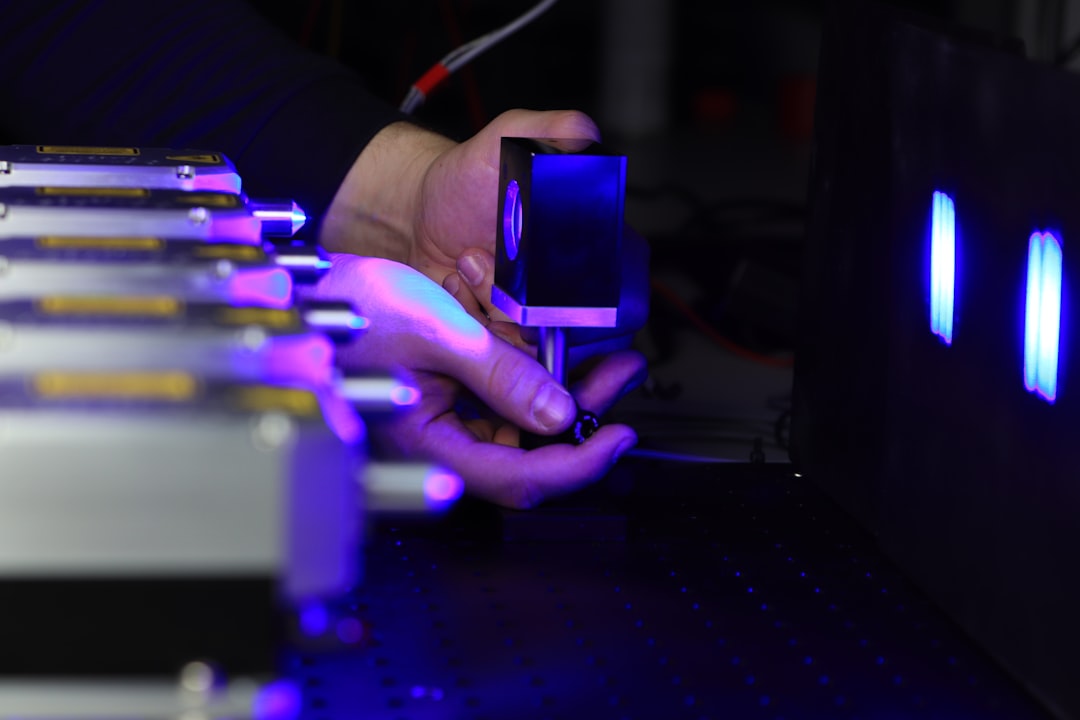When you think about hair removal, you might envision the traditional methods like shaving, waxing, or using depilatory creams. However, laser hair removal has emerged as a popular alternative that offers a more permanent solution. This method utilizes concentrated beams of light to target and eliminate unwanted hair.
Unlike temporary solutions, laser hair removal can significantly reduce hair growth over time, making it an appealing option for many individuals seeking a long-term solution. As you consider laser hair removal, it’s essential to understand that the process is not a one-size-fits-all approach. The effectiveness of the treatment can vary based on several factors, including your skin type, hair color, and the area being treated.
Generally, the best candidates for laser hair removal have light skin and dark hair, as the contrast allows the laser to target the pigment in the hair more effectively. However, advancements in technology have made it possible for individuals with different skin tones and hair colors to benefit from this treatment as well.
Key Takeaways
- Laser hair removal uses concentrated light to target and destroy hair follicles, preventing future hair growth.
- The process works by targeting the pigment in the hair follicle, which absorbs the light and converts it into heat, damaging the follicle.
- Different types of lasers, such as Alexandrite, Diode, and Nd:YAG, are used for hair removal, each with its own advantages and limitations.
- Factors such as hair color, skin type, and hormonal imbalances can affect the success of laser hair removal.
- Proper aftercare, including avoiding sun exposure and using gentle skincare products, is crucial for the success and safety of laser hair removal.
How Laser Hair Removal Works on the Skin
The mechanics of laser hair removal are fascinating and involve a sophisticated interplay between light and skin. When you undergo a laser hair removal session, a trained technician uses a handheld device that emits laser light. This light is absorbed by the melanin in your hair follicles, which generates heat.
The heat damages the follicle, inhibiting its ability to produce new hair. This process is known as selective photothermolysis, where the laser selectively targets the hair while minimizing damage to the surrounding skin. During the procedure, you may experience a sensation similar to a rubber band snapping against your skin.
While this can be uncomfortable, most people find it tolerable. The duration of each session varies depending on the size of the area being treated; smaller areas like the upper lip may take just a few minutes, while larger areas like the back or legs can take up to an hour or more. It’s important to note that multiple sessions are typically required to achieve optimal results, as hair grows in different cycles and not all hairs are in the same growth phase at any given time.
The Science Behind Targeting Hair Follicles
Understanding how lasers specifically target hair follicles can help demystify the process for you. Hair grows in cycles: anagen (growth), catagen (transitional), and telogen (resting). Laser hair removal is most effective during the anagen phase when the hair is actively growing and is firmly rooted in the follicle.
This is why multiple treatments are necessary; not all hairs are in the same phase at once, and some may need additional sessions to be effectively targeted. The wavelength of the laser used plays a crucial role in its effectiveness. Different wavelengths penetrate the skin to varying depths, allowing for targeted treatment of hair follicles at different levels.
For instance, longer wavelengths can reach deeper follicles, making them suitable for coarser hair types.
Different Types of Lasers Used for Hair Removal
| Laser Type | Wavelength | Skin Type | Effectiveness |
|---|---|---|---|
| Diode | 800-810 nm | Fair to medium | High |
| Alexandrite | 755 nm | Fair to olive | High |
| Nd:YAG | 1064 nm | Olive to dark | High |
| Ruby | 694 nm | Fair to light | Low |
As you explore laser hair removal options, you’ll encounter various types of lasers designed for different skin types and hair colors. The most common types include Alexandrite lasers, Diode lasers, and Nd:YAG lasers. Each type has its unique characteristics that make it suitable for specific applications.
Alexandrite lasers are known for their speed and effectiveness on lighter skin tones with dark hair. They emit a wavelength of 755 nm, which is highly effective at targeting melanin in the hair follicles. On the other hand, Diode lasers operate at a longer wavelength (800-810 nm) and are versatile enough to treat a broader range of skin types, including those with darker skin tones.
Lastly, Nd:YAG lasers are particularly effective for individuals with darker skin because they penetrate deeper into the skin without affecting the surface layer as much. Understanding these differences can help you make an informed decision about which type of laser is best suited for your needs.
Factors That Affect the Success of Laser Hair Removal
Several factors can influence the success of your laser hair removal treatment. One of the most significant factors is your hair color and thickness. Darker, coarser hair tends to respond better to laser treatments because it contains more melanin, which absorbs the laser energy more effectively.
Conversely, fine or light-colored hair may be more challenging to treat successfully. Your skin type also plays a crucial role in determining how well you will respond to laser hair removal. Individuals with lighter skin tones generally experience better results because there is a greater contrast between their skin and hair color.
However, advancements in technology have led to the development of lasers that can safely treat darker skin tones as well. Additionally, hormonal factors can affect hair growth patterns; conditions such as polycystic ovary syndrome (PCOS) may lead to increased hair growth in certain areas, which could require more frequent treatments.
The Importance of Proper Aftercare for Laser Hair Removal
Protecting Your Skin from the Sun
Following your treatment, it’s essential to avoid sun exposure for at least two weeks. UV rays can irritate your skin and lead to complications such as hyperpigmentation.
Moisturizing and Soothing Your Skin
Keeping your skin moisturized can aid in recovery and reduce any discomfort you may experience after the procedure. This helps to soothe and calm your skin, promoting optimal healing.
Additional Tips for a Smooth Recovery
In addition to protecting your skin from the sun and keeping it moisturized, there are a few more things to keep in mind. Avoid using harsh skincare products or engaging in activities that may cause excessive sweating for a few days following your session. By following these simple guidelines, you can enhance your results and minimize any potential side effects.
Potential Risks and Side Effects of Laser Hair Removal
While laser hair removal is generally considered safe, it’s essential to be aware of potential risks and side effects associated with the procedure. Common side effects include redness, swelling, and mild discomfort in the treated area, which typically subside within a few hours to a couple of days. However, more severe side effects can occur in rare cases.
Some individuals may experience changes in skin pigmentation, particularly if they have darker skin tones or if proper aftercare is not followed. In some instances, blisters or burns may occur if the laser settings are not appropriately adjusted for your skin type or if an inexperienced technician performs the procedure. To minimize these risks, it’s vital to choose a qualified practitioner who uses FDA-approved equipment and follows safety protocols.
The Future of Laser Hair Removal Technology
As technology continues to advance, so does the field of laser hair removal. Researchers are constantly exploring new methods and devices that promise even greater efficacy and safety for patients. One exciting development is the emergence of combination therapies that integrate laser treatments with other modalities such as radiofrequency or ultrasound technology.
These combinations aim to enhance results by targeting multiple aspects of hair growth. Moreover, innovations in laser technology are making treatments faster and more comfortable than ever before. Newer devices feature advanced cooling systems that help minimize discomfort during sessions while improving overall efficacy.
As these technologies evolve, you can expect even more personalized treatment options tailored to your unique needs and preferences. In conclusion, understanding laser hair removal involves delving into its mechanics, benefits, and potential risks. By educating yourself about how it works and what factors influence its success, you can make informed decisions about whether this treatment is right for you.
As technology continues to advance, laser hair removal will likely become even more accessible and effective for individuals seeking a long-term solution to unwanted hair growth.
If you are interested in learning more about laser hair removal, you may want to check out this article on fashion and beauty trends related to hair removal: Fashion and Beauty Trends.
It provides valuable information on how to achieve smooth, hair-free skin with the help of advanced treatments.
FAQs
What is laser hair removal?
Laser hair removal is a cosmetic procedure that uses a concentrated beam of light (laser) to remove unwanted hair. The laser targets the pigment in the hair follicles, damaging them and inhibiting future hair growth.
How does laser hair removal work?
During the procedure, the laser emits a light that is absorbed by the pigment in the hair follicles. This damages the follicles and inhibits their ability to grow new hair.
Is laser hair removal permanent?
Laser hair removal can lead to long-term hair reduction, but it is not always permanent. Multiple sessions are usually required to achieve the best results, and maintenance treatments may be needed to sustain the effects.
What areas of the body can be treated with laser hair removal?
Laser hair removal can be used to treat unwanted hair on various areas of the body, including the face, legs, arms, underarms, bikini line, and back.
Is laser hair removal safe?
When performed by a qualified and experienced professional, laser hair removal is generally considered safe. However, there are potential risks and side effects, such as skin irritation, redness, and changes in skin pigmentation.
Who is a good candidate for laser hair removal?
Laser hair removal is most effective for individuals with light skin and dark hair, as the laser targets the pigment in the hair follicles. It may not be as effective for individuals with light hair or dark skin.
How should I prepare for laser hair removal?
Before undergoing laser hair removal, it is important to avoid sun exposure and tanning beds, as well as plucking, waxing, or electrolysis, which can disturb the hair follicles and interfere with the treatment.







